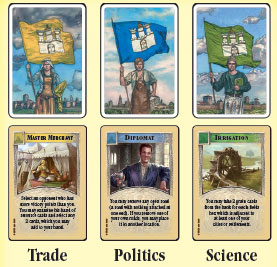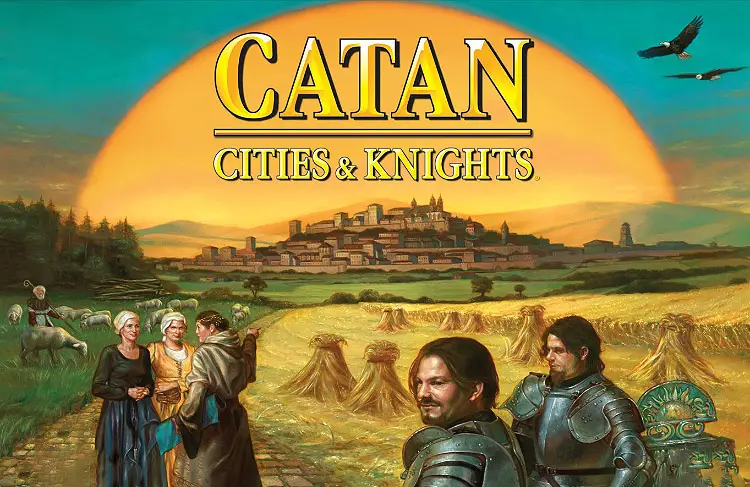
Pillaged cities are reduced to settlements (replace the city piece with a settlement). If the barbarians are stronger, they are victorious! If the barbarians win the battle, they pillage one or more cities. Of the players who have cities, there is a 3-way tie for who contributed the least. However, players who do not have any cities are not counted for this purpose. When the Barbarians win, they pillage a city belonging to the player(s) who contributed the least defense. The Barbarians win the attack because they have a total strength of 4 (for 4 total cities on the board), and the Knights have a total strength of 3 (assuming all Knights you mention are activated and level 1). Sum up the value of all the active knights to determine the strength of the defending army. Remember that the strength of each knight is based upon its type: basic (1), strong (2), or mighty (3). Only the active knights are counted, the inactive knights do not assist in defending the island in any way. Add up all the cities owned by all of the players anywhere on the island to determine this strength.Īll active knights of all players (even those who do not own any cities) will defend against the barbarians. The strength of the barbarians is equal to the number of cities (including metropolises) owned by all players. All that matters is the total number of cities among all players compared to the total number of active knights among all players. It doesn't matter if an individual player has as many knights as they do cities. You say that players 2 and 3 are protected, but this is not correct. I think it's very balanced.Players 1, 2, and 3 will each have 1 city pillaged. That being said, I have won multiple games this way, but it's not always a trump card.

This is more powerful than the one that you get with the paper strategy. The aqueduct "stretegy" is a calculated risk, because quite often, late into the game, players have expanded to the point where they're collecting multiple resources on every number. But, if I were to build out roads and put multiple settlements and/or cities on that hex, it becomes superior. But, with aqueduct for example, I don't need to use my cards to expand out to a 4/9/3 if I'm not on those numbers, because collecting only one set resource on those rolls is inferior to collecting any card. If you strategically build multiple settlements on certain numbers, it's more powerful than the aqueduct because you're getting more. In games where I can quickly obtain it, it allows me to focus on making my settlements and cities powerhouses, rather than expanding out.Īnd it's not without it's weaknesses. The Aqueduct gives players an alternative strategy to "get on as many numbers as possible." Sometimes when we place, there's only shitty options for number spread, so I decide to go with the aqueduct strategy instead. but I don't like changing official rules because it feels like cheating.Īnyone else have any thoughts on this? I just cannot get my head around why they would make such a ridiculously powerful ability in exchange for 6 pieces of paper.


I prefer to play a house rule where it only applies on YOUR turn and not everyone's turn, this keeps the game a bit more balanced and people now have incentive to spread out and settle other hexes (which I think should be the core of the game) and the gold hex is valuable once again.

It also discourages people from spreading out, because if you aren't settled on a number 6 say, then why would you care? Every time a 6 comes up you can pick any resource, and you might say 'but what if you get a city there?' but having one wild resource is better than two set resources (in my opinion). I really think this is overpowered, especially when combining with seafarers as it completely undermines gold hexes. You may not, however, use this ability when a “7” is rolled." "Aqueduct (green): If, when the dice are rolled for production, you do not receive any resources or commodities, you may take any one resource of your choice from the bank.


 0 kommentar(er)
0 kommentar(er)
